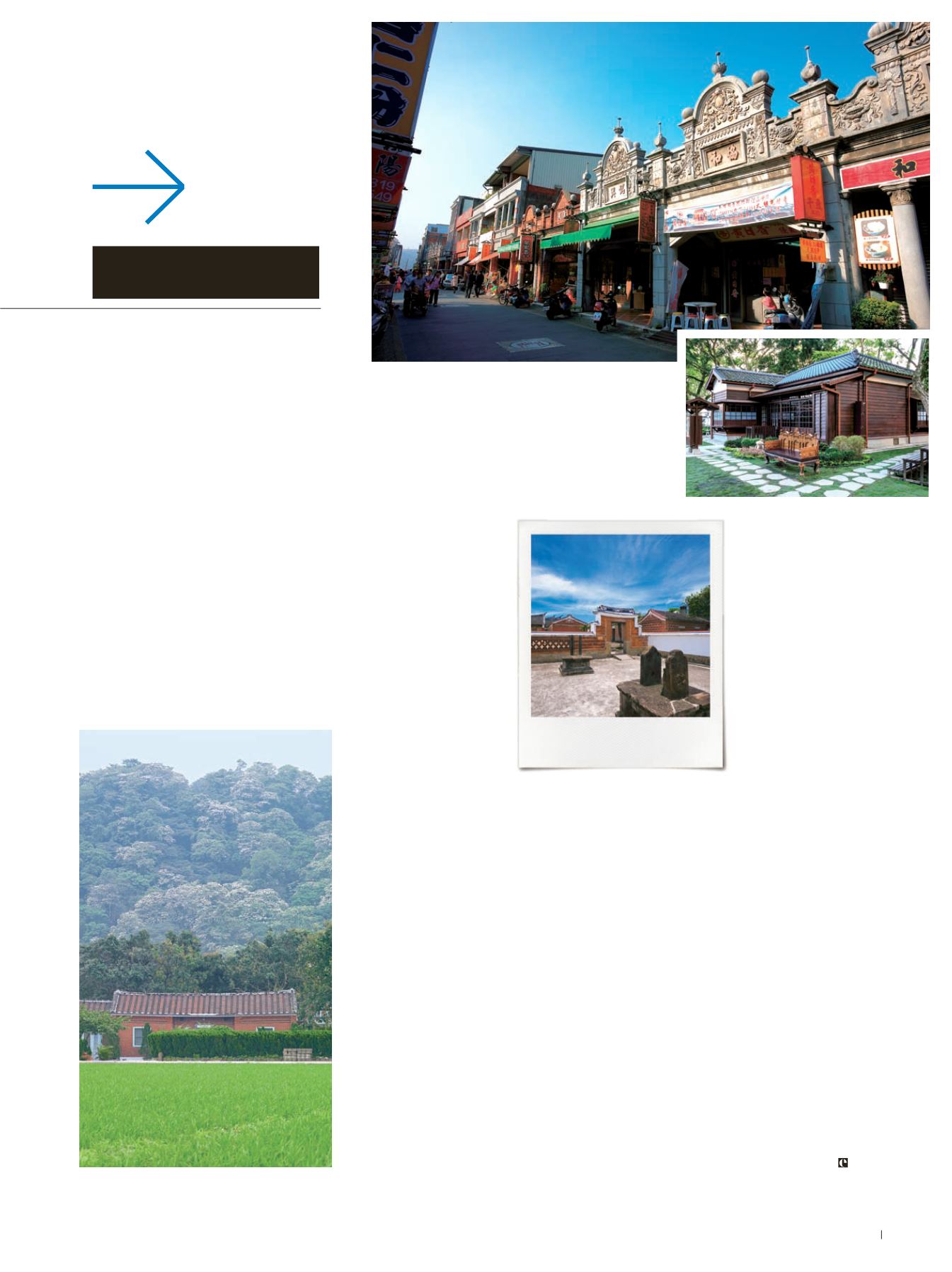
Thirteen kilometers upstream, on a bluff
with commanding views over the Dahan
River, the settlement now known as
Daxi (literally “big creek”) appeared in
the early years of the 18th century. The
first inhabitants were Ketagalan and
Atayal indigenous people, but within a
few generations Fujianese and Hakka
settlers dominated the area.
Acentury ago, the Japanese authorities
then ruling Taiwan reorganized Daxi’s
commercial district. After the roads
we r e w i d e n e d , p r o p e r t y own e r s
commissioned architects and artisans to
create new facades for their homes. In
k e e p i n g w i t h t h e t i m e s , t h e s e
incorporated a fabulous assortment of
Baroque, Greek, neoclassical and
Renaissance elements, along with some
distinctly Taiwanese motifs.
What was then known as Lower
Street (now Heping Road) has better-
preserved buildings than the former
Upper Street (now Zhongyang Road.)
Both deserve to be explored at a
leisurely pace, and visitors who
continue beyond the spot where Heping
Road makes a 90-degree turn will find a
series of spots of historical interest.
The first is a paved stairway up
which stevedores hauled cargo brought
in by boat. The second is a broad
pedestrian bridge across the Dahan.
The third spot is a mid-20th
century building at the far end of a park
named for Chiang Kai-shek, Taiwan’s
president from 1949 to 1975. Chiang
stayed here on occasion, and it is now a
restaurant with fine views and an
intriguing collection of photos of
President and Madame Chiang.
Continuing along Puji Road leads
to the Bushido Hall, built by the
Japanese authorities in the 1930s as part
of their efforts to inculcate Japanese
culture via martial arts. The adjacent
colonial-era building will soon become
Daxi Wood Art Ecomuseum.
Finally, outside the downtown, but
not so far away the sprightly cannot walk
there in half an hour, stands the Lee Teng-
fang Historic Residence, a beautifully
preserved example of Qing-era architecture
with distinctive Hakka decoration.
Daxi
Daxi
’
s baroque-style shop facades have been
beautifully restored. Other notable architec-
ture includes traditional Japanese wooden
buildings and the Qing-era family home of
Hakka businessman Lee Teng-fang.
ࡌ
ూٙˋ
ݾ
дόϼeତʊϓ
މ
˝ᖵ͛࿒௹
ي
ٙ˚ό
ܔ
ጘe˾ٙҽᙜ
ٹ
̚ࡢഃdίί
࢝ତəɽІ˾˸Ըٙዝ̦༦f
PHOTOGRAPHY: IMAGE TAIWAN / TOP PHOTO GROUP
45
enVoyage


